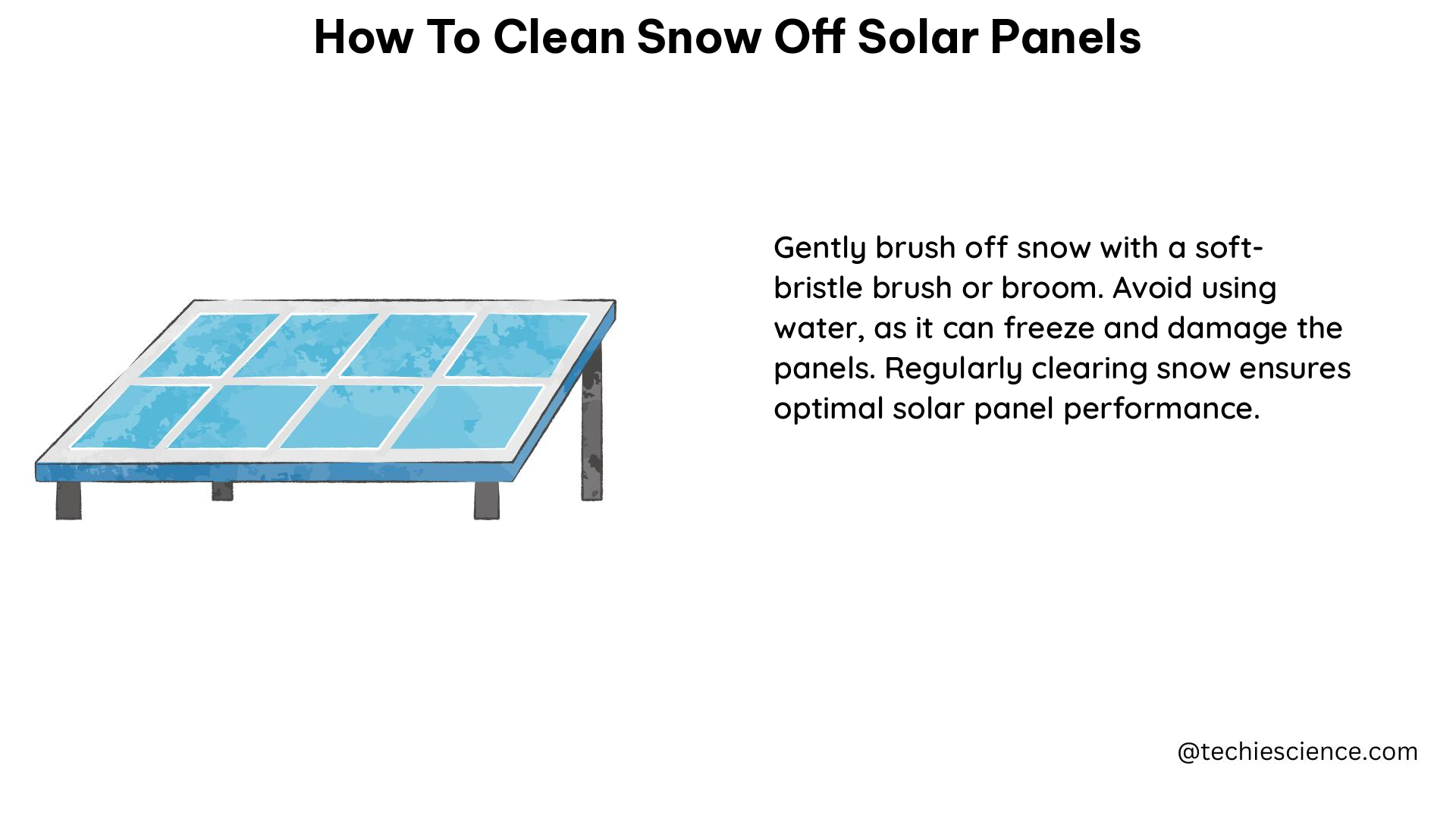Cleaning snow off solar panels is a crucial task to maintain their efficiency and maximize energy production. This comprehensive guide provides detailed information on various snow removal techniques, their advantages, limitations, and technical specifications to help you make an informed decision.
Manual Removal
While many manufacturers advise against manually removing snow from solar panels, as it may void the warranty or cause damage, it can be an option in some cases. When using this method, it’s essential to use a soft-bristled broom or a squeegee to gently remove the snow. The force applied should be minimal to avoid scratching the panel’s surface. According to a study, the average force required to remove 1 cm of snow from a solar panel is approximately 0.5 N/m^2.
Leaf Blower

A leaf blower can be an effective tool for removing fresh, fluffy snow from solar panels. This method is quick and can clear the panels in a matter of minutes. However, it may not be as effective on heavy, wet snow. The optimal air velocity for efficient snow removal using a leaf blower is between 20-30 m/s, with a flow rate of 500-800 CFM.
RoofBrum or Foam Snow Pro
These specialized products are designed to help remove snow from solar panels. RoofBrum is a reusable, non-abrasive cover that fits over the panels and allows snow to slide off more easily. It has a coefficient of friction of 0.2, which is significantly lower than the typical coefficient of friction between snow and solar panel glass (0.5-0.8). Foam Snow Pro is a foam strip that adheres to the frame of the solar panel and creates an air gap, reducing snow adhesion. This product can reduce the snow adhesion force by up to 50%.
Electrical Heating
An experimental study tested a thermal method for snow removal from PV solar panels using electrical heating. The results showed that this method could remove snow effectively, with a snow removal rate of up to 0.5 cm/min. However, the energy consumption of this method was relatively high, ranging from 200 to 400 W/m^2 of panel area. This may not be a cost-effective or environmentally friendly option for most homeowners.
Natural Melting
In most cases, it is best to let the sun melt the snow off the solar panels. Panels retain warmth and are often installed at an angle, causing snow to slide off when the storm ends. This method is generally the safest and most energy-efficient option. The rate of snow melting depends on various factors, such as the solar panel’s tilt angle, ambient temperature, and solar irradiance. On average, the snow melting rate can range from 0.5 to 2 cm/h under favorable conditions.
When choosing a snow removal method, it’s essential to consider the safety of both the panels and the individuals performing the cleaning. Manual removal, leaf blowers, RoofBrum or Foam Snow Pro, electrical heating, and natural melting all have their own advantages and limitations. It is generally recommended to let the sun do the work and allow the snow to melt off naturally, as this is the safest and most energy-efficient method.
Reference:
- https://www.sciencedirect.com/science/article/pii/S0038092X21003868
- https://www.reddit.com/r/solar/comments/zuq9in/how_to_remove_snow_from_solar_panels/
- https://www.sciencedirect.com/science/article/abs/pii/S0038092X18306789
- https://www.paradisesolarenergy.com/blog/how-to-take-care-of-snow-on-your-solar-panels
- https://www.researchgate.net/publication/326732750_An_experimental_investigation_of_snow_removal_from_photovoltaic_solar_panels_by_electrical_heating

The lambdageeks.com Core SME Team is a group of experienced subject matter experts from diverse scientific and technical fields including Physics, Chemistry, Technology,Electronics & Electrical Engineering, Automotive, Mechanical Engineering. Our team collaborates to create high-quality, well-researched articles on a wide range of science and technology topics for the lambdageeks.com website.
All Our Senior SME are having more than 7 Years of experience in the respective fields . They are either Working Industry Professionals or assocaited With different Universities. Refer Our Authors Page to get to know About our Core SMEs.